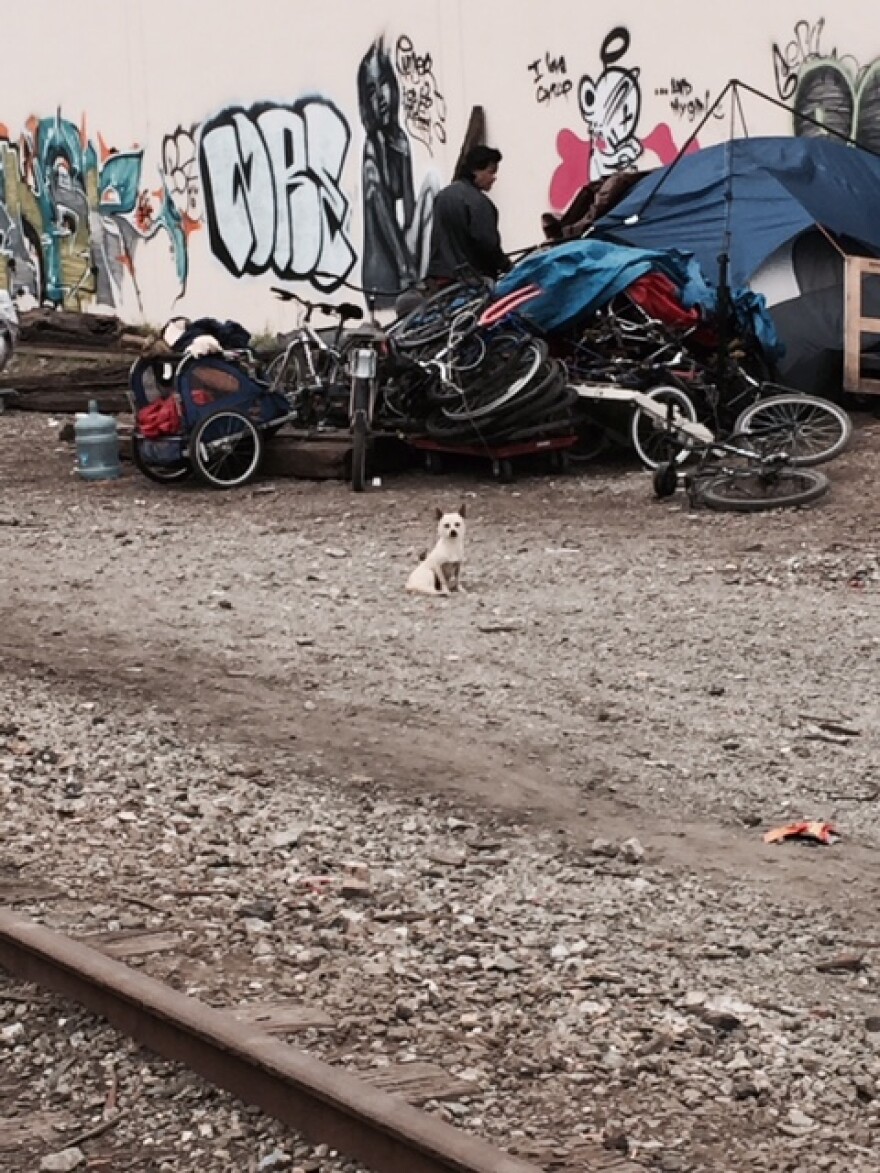The gravel edge of the railroad tracks that backs on to a warehouse wasn’t the end of the line for Marshawn Lewis and his neighbors. In fact, they’ve already scattered.
But in mid-January, about 50 people had lived there for nearly three months. They slept in tents and makeshift shelters of tarps and cardboard boxes. The land became home after they were kicked out of a creek-side San Jose homeless encampment known as the Jungle.
The community hoped that moving to private property, away from the creek, meant they could find a longer-term solution.
“You are seeing people affected by urban poverty, surviving and staying out of the way,” Lewis said, gesturing as if to include his entire community.
The owner of the land, Union Pacific, cleared the camp January 21, working with city officials and nonprofits to make sure members of the community access what services are available.
But getting those services and housing to those who need it is a big problem.
“Even the market-rate housing stock is something there is not enough of to go around,” said Ray Bramson, the city’s homeless response manager.
Many people on the Union Pacific land have vouchers to rent, but case managers can’t find a place for them. Those rents are set at HUD fair market values, which is about $1,419 for a one-bedroom. This in a city where average rents are nearly $2,900 and the median one-bedroom tops $2,000 a month.
“We have over 60 people (from the Jungle) with coupons in hand,” he said. “They have a case manager. They have a full rental subsidy that will pay their rent for two years.”
Despite all of that they remain on the streets until something opens up. And with fierce competition for housing – and not just from other homeless people with vouchers, but also from folks with jobs and apartments – it’s unclear when something will become available for many.
Bramson hopes that in the end, 250 of the more than 300 who lived in the Jungle will be housed.
This extreme example of poverty near the center of the city that calls itself the Capital of Silicon Valley is garnering national attention. The clearing of the Jungle made headlines on the BBC and the New York Times. But the numbers of homeless have remained steady for years and they are staggering.
“Here in San Jose there are 5,000 people homeless on any given night in our community,” Bramson said. “On a per capita basis we have one of the largest unsheltered population in the country.”
The population of those who need help and the lack of housing is the “perfect storm,” said Jennifer Loving, executive director of Destination: Home.
“It takes five minimum wage jobs to afford an apartment here,” she said. “Really, what we have is a supply problem.”
Her organization is proposing the construction of 6,000 deeply affordable units for homeless people in the county. The San Jose City Council reviewed the proposal. But it is unclear where the housing would go and how it would be funded.
“It will take years,” she said. “That’s the truth. And, until there is a housing response, we are going to have people living in places where they should not have to be living.”
People like Lewis’ neighbor beside the railroad tracks, Toy Larks, 37.
She spent the days between the eviction notice from Union Pacific and the actual move trying to rally her neighbors and scouting safe locations where a core of them could move together for protection.
Holding it all together while living on the streets isn’t easy, she said.
“Every time we get settled we have to move again,” Larks said. “We need a place to stay as long as we can to get ready for the next move because it is going to happen.”
More than anything they need a safe space to transition back to the “normal world,” she said.
“Whether we want to believe it or not, we are not how we used to be when we were living as the norm,” she said. “You know, paying rent, 9 to 5, things like that. We are trying to do this as a transitional way of getting back into function with the rest of society.”






